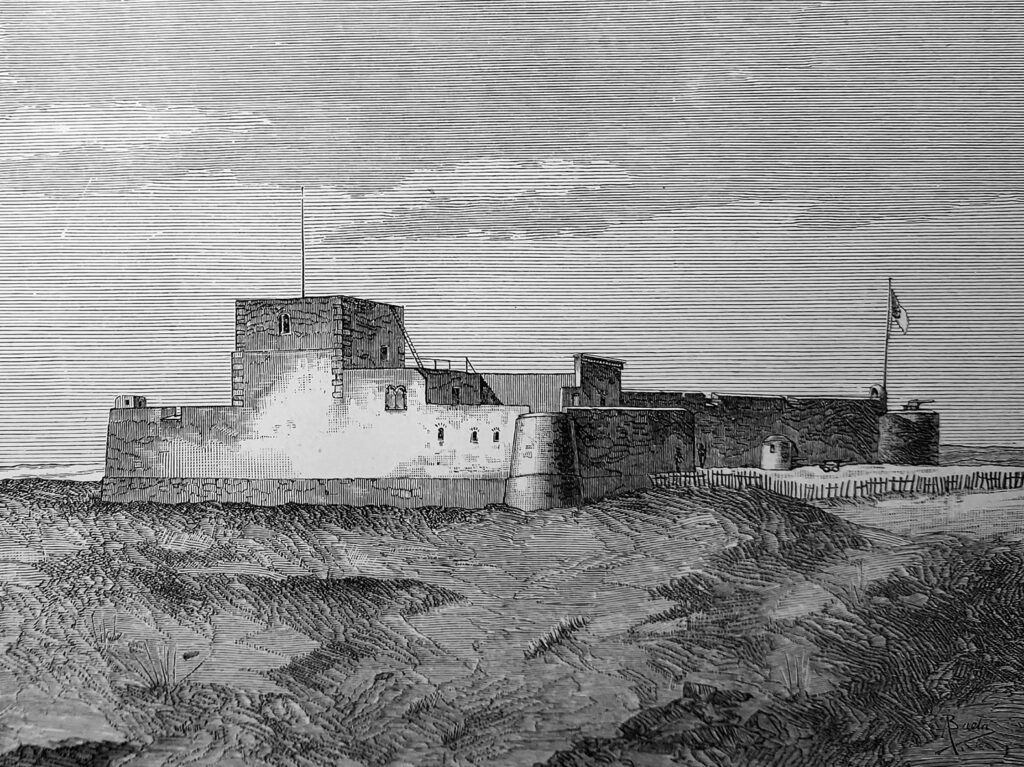(Sofalla, Çofala)

Fortaleza de S. Caetano de Sofalla, 1884, detail (in Augusto Castilho, Viagem da Canhoeira ‘Rio Lima’ de Lisboa a Moçambique, 1884-1885, Lisboa, Imprensa Nacional, 1889)
Sofala: the Poem and Enigma of As-Sufaliyya
Sofala developed into a privileged trading outpost of the Munhumutapa Empire, connected not only to trading routes plying the Swahili Coast and the Western Indian Ocean, but also to Southeast Asia, probably via the Maldives. During the early 16th century, when they overran the Indian Ocean’s trading routes, the gold trade flowing from the Zambezi heartland soon attracted the Portuguese, and Sofala was one of the first ports they occupied. However, under Portuguese administration from 1505 onward, Sofala soon entered a period of economic stagnation, as non-Portuguese merchants diverted inland routes, and as other port settlements along the southeastern African coast flourished. Beyond earlier historiography centered on the Portuguese presence in Sofala, studies from the 1960s and 1970s began to signal a new field of interest on the indigenous and islamicate communities and cultures that predated, coexisted and rivaled with the Portuguese, as they consolidated their foothold in the Zambezian coastland.
